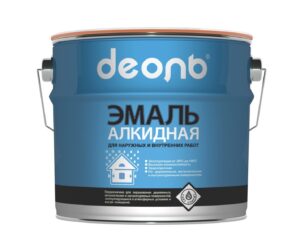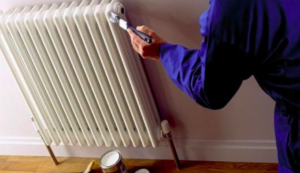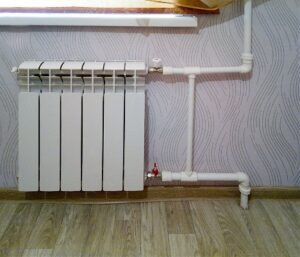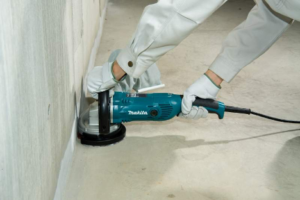Is it possible to paint hot radiators during the heating season?
One of the common questions about repair work is whether hot radiators can be painted. This can be done, but first you need to choose the right composition. How to do this and how to apply the paint is described below.
The content of the article
Painting during heating: pros and cons
It is impossible to say for sure whether it is possible to paint radiators during the heating season, because much depends on the specific paint. All compositions adhere well to the surface in the temperature range from 15 to 30 degrees Celsius. It is conditionally possible to apply any composition up to +50°C, but not higher.

If you study whether it is possible to paint hot radiators with paint from the manufacturer’s point of view, you need to look at the description of the drug. If the manufacturer himself answers positively, this means only an acceptable option. However, there is no guarantee that the composition will adhere normally to the surface - if the paint is not of very high quality, the following consequences are possible:
- rapid solvent evaporation process – air pollution with toxic substances;
- poor-quality coating, formation of lumps and pores;
- the need to increase mass consumption by 1.5-2 times.
What you can and cannot paint
In some situations, you can paint hot batteries with paint. These are special compositions based on organic polymers that can withstand temperatures up to +100°C:
- Alkyd compositions do not evaporate a strong odor, while retaining the original shades well even at high temperatures. There is no doubt whether it is possible to paint hot radiators with this composition. The paints are inexpensive and give a lasting effect.
- Acrylics are also resistant to high temperatures. They are durable, but give off a rather strong smell. Therefore, they are more often used for painting outside.
- When studying whether it is possible to paint batteries with the heating on, oil compositions should also be considered. These paints are the most reliable. But they smell quite strongly and take a very long time to dry. Therefore, you will have to ventilate the room and wait several days until it dries completely.
- You can paint a hot battery using automotive enamel. It is poured into aerosol cans under pressure and applied at a distance of 25-30 cm. This composition is resistant to high temperatures and is also very convenient to apply to the surface.

If you are trying to figure out whether it is possible to paint hot batteries, you should also talk about those compounds that are strictly prohibited. These are paints based on:
- toluene;
- organic alcohols (including methyl, butyl);
- xylene.
They evaporate quite quickly and have a strong smell. As a result, many dangerous substances remain in the air, which can cause headaches, dizziness and other side effects. Therefore, it is important to decide in advance what kind of paint can be used to paint hot batteries, and how to do it correctly.
Carrying out calculations and preparing materials
It is clear that you first need to decide on a specific type of paint and manufacturer. It is advisable to study customer reviews in order to purchase a truly high-quality composition.Painting hot radiators begins with calculating the required amount of composition and preparing available materials. When planning work, you should proceed from the consumption of 250 ml per battery, which consists of 8 fragments.
Moreover, it is best to take it even with a reserve. For example, 300 ml is enough to paint a hot battery. If you use acrylic compounds, consumption increases by 40-50%. Thus, for 1 radiator it is better to take a 500 ml can.
You also need to decide in advance how to paint a hot radiator. To do this you will need the following tools and materials:
- brush (you can also use an electric drill with a brush attachment);
- rags;
- sandpaper;
- respirator;
- 2 small brushes (the bristles should be stiff);
- room fan;
- disposable gloves.
You can do a test first - before painting a hot radiator, apply a layer to the coil in the bathroom and see how well the paint adheres. If it is smooth, there are no “ripples” or “crusts”, you can begin preparatory work and then the main work.
Preparation
As already mentioned, some types of compounds can actually be used to paint batteries during the heating season. It is not recommended to start work right away, since you first need to prepare the surfaces. The main stages are:
- Wipe the radiator from dust and dirt with a damp cloth. If necessary, wash with soap and dry.
- Inspect the surface for corrosion spots.
- Next, remove the old coating using a scraper and sandpaper. Before this, the surface can be treated with a washing solution (100 g of soda ash, 50-70 g of slaked lime per 10 liters of hot water).
- Treat the surface with a primer.This is especially important if the battery is old and has many small pores. If the radiator is relatively new, you can skip this step.
- Cover the bottom with plastic film (on the floor under the radiator).
Main works
Now it’s clear whether it’s possible to paint hot batteries with acrylic paint. It remains to understand how to do the job efficiently:
- Dilute the composition exactly according to the instructions.
- Apply it first to hard-to-reach corners. Brushes with curved holders are suitable for this.
- Then paint the accessible (outer) parts. To do this, use a roller or a wide brush. Moreover, they slide downward to prevent the formation of smudges.
- Wait until the initial layer dries; for this it is better to ventilate the room.
- Apply the second layer in the same way.

There is no doubt about whether it is possible to paint heating radiators while they are hot. Indeed, if necessary, this can be done, but only with the use of a special composition. Preparatory work is carried out first, after which layers are applied in hard-to-reach places and then in open areas.





